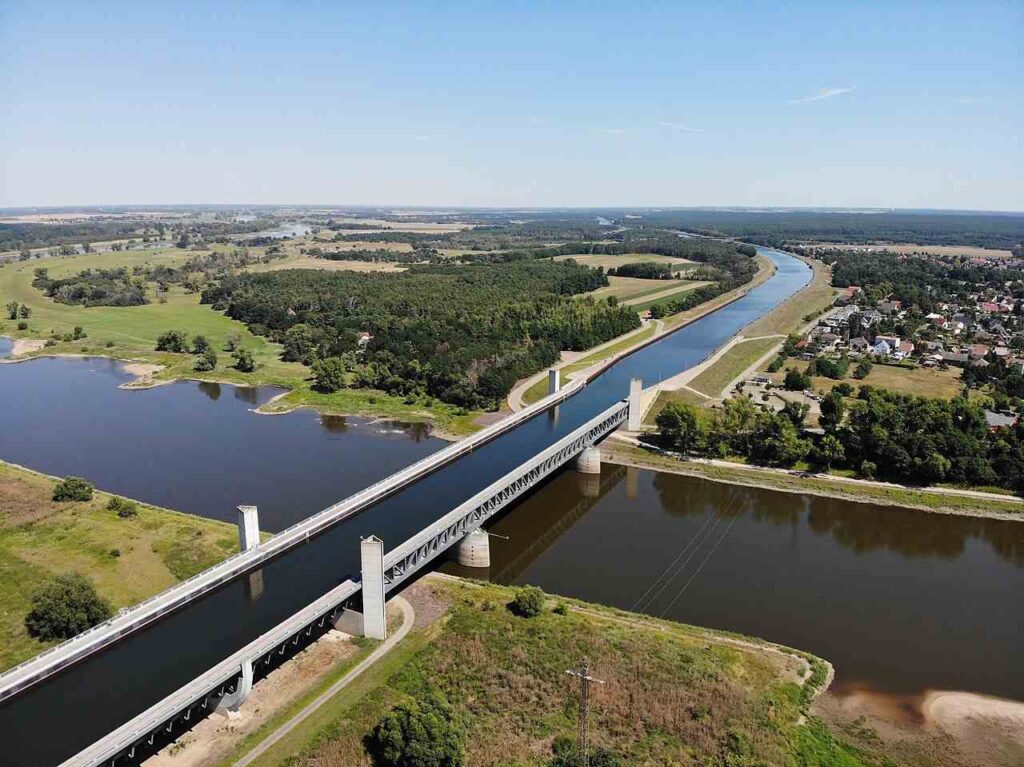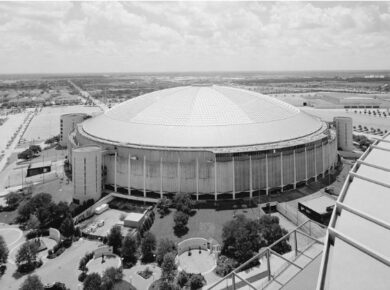Magdeburg conduit: the world’s longest accessible aqueduct
The Magdeburg Water Bridge, completed in 2003, is a brilliant architectural product that serves as an efficient route between the Elbe-Havel and the Mittelland Canal, crossing the Elbe in Germany. Additionally, it is the largest canal underbridge in the European continent and enables ships and vessels to travel across Rhineland and Berlin.

Photo: Olivier Cleynen
The bridge was constructed because the Elbe’s path is far lower than the two canals that meet in Magdeburg, near Berlin. Due to the river’s receding water levels, cargo-carrying barges and vessels encountered numerous difficulties. Construction on the water link began in the 1930s, but it was put on hold until 1997 owing to World War II and the ensuing split of Germany. In 2003, the aqueduct was eventually finished and made available to the public.

Photo courtesy: WSV
The Magdeburg Bridge, at 918m in length, is the world’s longest accessible aqueduct. The water bridge spans 34m and has a water depth of 4.25m, allowing ships to pass. The Canal Bridge consists of two parts. The approach Bridge, with a length of 609m, stands as a multi-span continuous steel beam bridge. The main Bridge, with a length of 227,40m, is a three-span continuous steel beam bridge.

Photo courtesy: WSV
The project was designed by Ingenieurbüro Grassl GmbH , with Bilfinger Inc. and Dillinger Stahlbau as the principal contractors. In total approx. 24.000 metric tons of steel were used. For the economic production of the superstructure mainly steel sheets in quality S355 J2G3 with widths up to 4500 mm and thicknesses up to 80 mm were used.

Photo courtesy: WSV
The Magdeburg conduit stands as a perfect example of brilliant superiority when it comes to architectural imagining marvels. It may not be among the world’s most prominent wonders, but it does have its own unique and unsurpassed design.
About the Author:

Bruno Dursin – Managing Director at Believe in Steel. Bruno has more than 30 years of experience in promoting steel & steel solutions. His clients benefit from his extensive network within the building industry.



